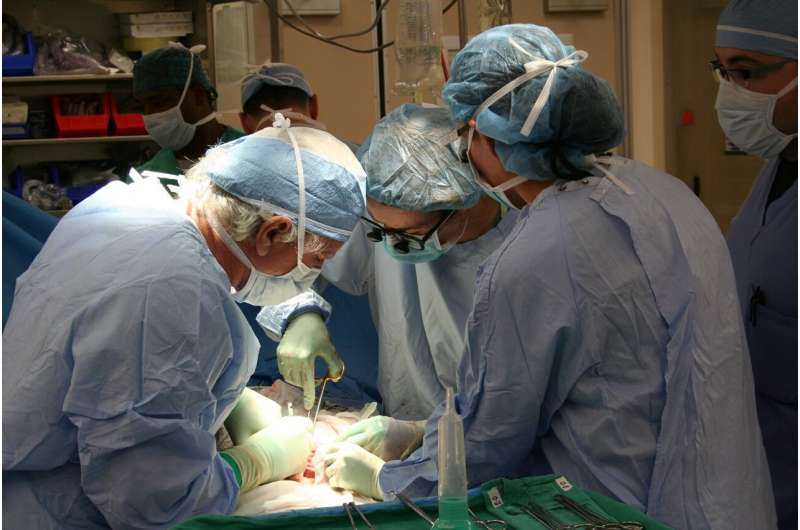This article has been reviewed according to Science X's editorial process and policies. Editors have highlighted the following attributes while ensuring the content's credibility:
fact-checked
peer-reviewed publication
trusted source
proofread
Study sets new standard for graft-versus-host disease prevention after stem cell transplant

Clinicians have a new standard for graft-versus-host disease (GVHD) prevention after allogeneic hematopoietic stem cell transplantation, according to results from a phase III study published June 22 in the New England Journal of Medicine. The new standard is more effective at preventing GVHD and comes with fewer side effects than the current gold standard.
"The new standard allows transplants to be less toxic," says lead study author Javier Bolaños-Meade, M.D., professor of oncology at the Johns Hopkins Kimmel Cancer Center.
In an allogeneic bone marrow transplant, the healthy stem cells come from the bone marrow of a relative who is not an identical twin of the patient or from an unrelated donor who is genetically similar to the patient. But a bone marrow transplant can cause GVHD, a serious and life-threatening complication.
For decades, researchers in the bone marrow transplant community have been interested in decreasing the rates of GVHD, which occurs when the donor's immune system reacts against the recipient's tissue. As opposed to an organ transplant where the patient's immune system will attempt to reject only the transplanted organ, in GVHD the new or transplanted immune system can attack the entire patient and all organs.
"At Hopkins we have been studying better alternatives to decrease GVHD," says Bolaños-Meade. "Since the late 1990s, early 2000s, we at Hopkins have been studying the role of a high-dose, post-transplantation, cyclophosphamide-based platform."
The current gold standard to prevent GVHD after bone marrow transplants is a combination of two drugs: a calcineurin inhibitor, such as tacrolimus or cyclosporine, and methotrexate. In the current phase III study, researchers from multiple institutions tested this standard to prevent GVHD against an experimental regimen of three drugs: cyclophosphamide, tacrolimus, and mycophenolate mofetil.
Patients were recruited and randomized to either arm. This was done during the COVID-19 pandemic, but despite that, the study completed accrual ahead of time: 431 patients were enrolled from 37 centers across the United States. Patients were HLA matched to donors if related, and if unrelated, they were to be matched but could have one antigen mismatch. It took two years to enroll all patients (June 2019 to June 2021) and patients were followed for at least one year.
Patients achieved the primary endpoint if they were alive, without acute GVHD grade III-IV, without chronic GVHD needing immunosuppression, and without relapse or progression from their cancer. At one year, the probability of achieving the endpoint was 52.7% for those getting the cyclophosphamide platform compared with 34.9% for those getting methotrexate and tacrolimus.
"More than half patients in the cyclophosphamide platform were alive, free of grade III-IV acute GVHD and chronic GVHD needing immunosuppression, and without disease relapse or progression versus a third in the methotrexate and tacrolimus arm," says Bolaños-Meade. "There were also a series of secondary endpoints showing less severe acute GVHD, and less chronic GVHD. Very importantly this was seen without an increase on relapses as historically—the better control of GVHD, the more cancer relapses. In this case we have better control of GVHD, but no more relapses."
The researchers say that for the first time since the 1980s, we have a more effective drug therapy to prevent severe cases of GVHD, and therefore, we have a new standard of care. "This is important because methotrexate and tacrolimus is toxic enough. Now our transplants can be performed even in older individuals. In fact, the median age in the study was 66 years," says Bolaños-Meade.
More information: Javier Bolaños-Meade et al, Post-Transplantation Cyclophosphamide-Based Graft-versus-Host Disease Prophylaxis, New England Journal of Medicine (2023). DOI: 10.1056/NEJMoa2215943



















